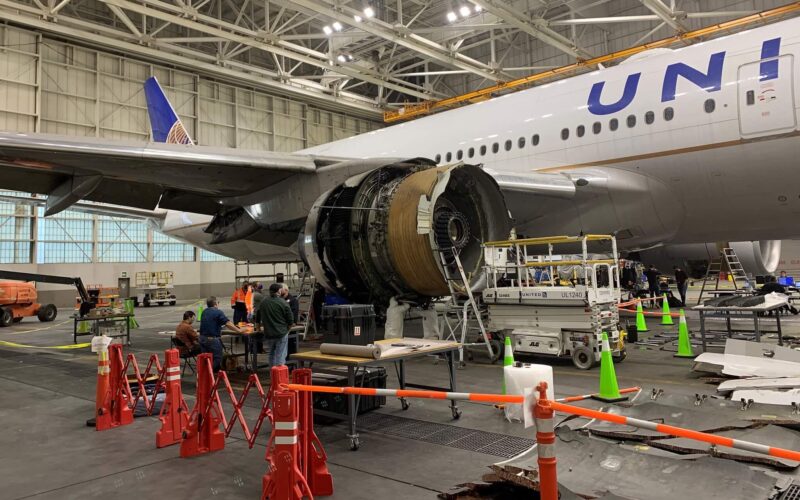The U.S. National Transportation Safety Board (NTSB) said in a briefing that the damage to one of the blades on the Pratt & Whitney engine that failed during the flight of a Boeing 777-200 of United Airlines in Denver appeared consistent with metallic wear.
On February 20, 2021, a United Airlines Boeing 777-200, operating flight UAL328 from Denver, United States, to Honolulu, Hawaii, US, suffered an engine failure, scattering engine parts over several neighborhoods around Denver.
Upon preliminary examination, the NTSB found that two fan blades were fractured in the right-hand Pratt & Whitney PW4077 engine. One fan blade was fractured near the root, while an adjacent fan blade was fractured about mid-span.
“Regarding the fan blade that was fractured at the root, a preliminary on-scene exam indicates damage consistent with metal fatigue,” NTSB Chairman Robert Sumwalt said. “For the fan blade that was fractured mid-span, the damage is consistent with it being struck when the other fan blade banged into it.” Parts of the wing-to-body fairing were damaged by debris, but no structural damage was found.
So far, the NTSB is unable to determine if the incident on February 20, 2021, is similar to the one that involved another United Airlines Boeing 777 on February 13, 2018. Back then, the NTSB concluded that the fracture of the hollow core PW4000 fan blades was due to the absence of a thermal acoustic imaging process defined by Pratt & Whitney, resulting in a lack of training for inspectors.
Sumwalt concluded that the incident of flight UAL328 was not classified as an uncontrolled engine failure since the containment ring worked properly and the cabin did not suffer any structural damage.

